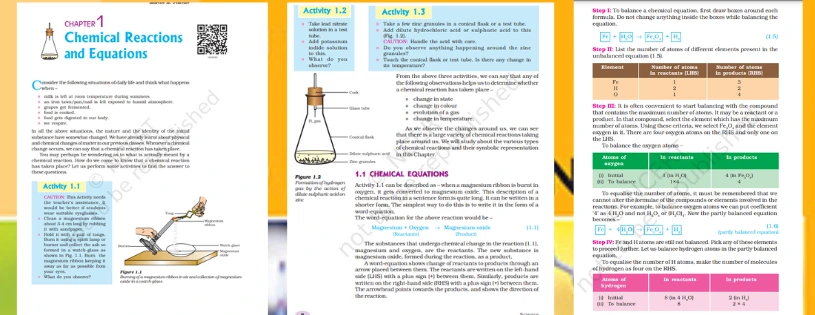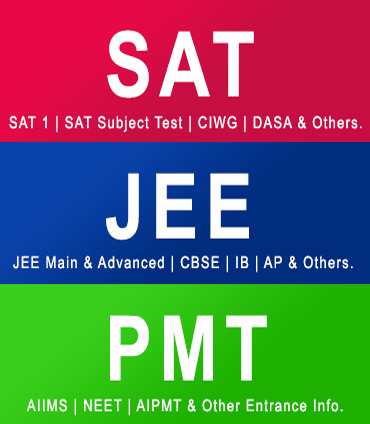CBSE Class 10th Implication of a balanced chemical equation & Preparation Download
The fundamental processes of the cosmos, including fuel combustion and bodily metabolism, are all controlled by chemical reactions. Students explore the exciting field of chemistry in CBSE Class 10 Science, where they study a variety of processes and how balanced chemical equations might express them. Knowing these equations is essential to understanding chemical reactions and goes beyond simple memorization. Let's examine the meaning of a balanced chemical equation in the scientific community and its repercussions.
What Is a Balanced Chemical Equation?
A chemical process can be symbolically represented by a balanced chemical equation, which lists the reactants, products, and stoichiometric coefficients that indicate their proportional quantities. The law of conservation of mass, which asserts that matter can only be generated or destroyed by chemical processes, is the basic idea behind solving an equation. Therefore, on both sides of the equation, the atomic count of each element must be the same.
Take the following process, for example, to generate water (H2O) from hydrogen gas (H₃) and oxygen gas (O₃):
2 + 2 + 2 → 2 + 2 ⁰ 2 → 2 ⁰ 2H 2 +O 2 − 2H 2 O
Two molecules of hydrogen and one molecule of oxygen combine to form two molecules of water in this equation for balance. The equation demonstrates that each element's total atomic count—oxygen and hydrogen—remains constant on both sides.
A Chemical Equation in Balance's Effects
1. Conservation of Mass
The most significant outcome of a balanced chemical equation is the validation of the conservation of mass rule. By ensuring that every element has the same amount of atoms on both sides of the equation, it demonstrates that mass is conserved in a chemical process. Understanding the quantitative aspects of reactions and calculating product yields requires an understanding of this concept.
2. Stoichiometry
The quantitative connection between reactants and products may be learned a lot from a balanced chemical equation. The relative quantities of the chemicals involved in the reaction are indicated by the stoichiometric coefficients in the equation. This makes accurate experimental design and analysis possible by allowing chemists to determine the mass, volume, or moles of reactants consumed or products created during a reaction.
3. Predictive Power
Scientists can forecast the results of reactions under various settings by using balanced chemical equations as predictive instruments. The greatest quantity of product that may be created in a reaction is determined by the limiting reactant, which can be found by analyzing the stoichiometry of the reaction. Pharmaceutical research, environmental science, industrial chemistry, and other domains all depend on this predictive capacity.
4. Chemical Understanding
Beyond its usefulness in real-world situations, learning balanced chemical equations improves students' comprehension of molecular-level chemical processes. Understanding how atoms rearrange to produce new compounds is made easier by this, since it sheds light on difficult ideas like bonding, reactivity, and energy changes in reactions. This improved comprehension provides the groundwork for additional research in chemistry and related disciplines.
Conclusion
studying balanced chemical equations in CBSE Class 10 Science is not just a theoretical exercise but also a means of gaining a grasp of the basic ideas that underpin chemical processes. Students gain analytical skills, a greater understanding of the complexities of the natural world, and the ability to think critically by appreciating the consequences of these equations. The understanding of balanced chemical equations will help students in their scientific endeavors by enabling them to solve chemistry's riddles and make significant contributions to the field.
Through balanced chemical equations, students embark on a journey of discovery, unlocking the secrets of matter transformation and laying the groundwork for future scientific endeavors. As they navigate through the realm of chemistry, armed with the principles of conservation of mass, stoichiometry, and predictive power, they embark on a path towards scientific literacy and innovation

CBSE Class 10 NCERT Science Topics for a Strong Foundation
| Chapter Name | Chemical Reactions and Equations |
| Topic Number | Topic |
| 1.1 | Chemical Equation |
| 1.2 | Balanced Chemical Equation |
| 1.3 | Implication of a Balanced Chemical Equation |
| 1.4 | Types of Chemical Reactions |
List of CBSE Class 10 Science Chapter
| Chapter 2 | Acids, Bases and Salts |
| Chapter 3 | Metals and Non-metals |
| Chapter 4 | Carbon and its Compounds |
| Chapter 5 | Life Processes |
| Chapter 6 | Control and Coordination |
| Chapter 7 | How do Organisms Reproduce? |
| Chapter 8 | Heredity |
| Chapter 9 | Light – Reflection and Refraction |
| Chapter 10 | The Human Eye and the Colourful World |
| Chapter 11 | Electricity |
| Chapter 12 | Magnetic Effects of Electric Current |
| Chapter 13 | Our Environment |
List of CBSE Class 10 Mathmetics Chapter
| Chapter Number | Chapter Name |
| Chapter 1 | Real Numbers |
| Chapter 2 | Polynomials |
| Chapter 3 | Pair of Linear Equations in Two Variables |
| Chapter 4 | Quadratic Equations |
| Chapter 5 | Arithmetic Progressions |
| Chapter 6 | Triangles |
| Chapter 7 | Coordinate Geometry |
| Chapter 8 | Introduction to Trigonometry |
| Chapter 9 | Some Applications of Trigonometry |
| Chapter 10 | Circles |
| Chapter 11 | Areas Related to Circles |
| Chapter 12 | Surface Areas and Volumes |
| Chapter 13 | Statistics |
| Chapter14 | Probability |
FAQs
Que1. Write the balanced chemical equation for the following reaction?
Phosphorus burns in presence of chlorine to form phosphorus pentachloride.
Burning of natural gas.
The process of respiration.
Ans. P4 + 10Cl2 → 4PCl5
CH4 +2O2 → CO2 +2H2O + heat energy
C6H12O6 + 6O2 + 6H2O → 6CO2 + 12H2O + energy
Que2. What Is the Distinction Between a Balanced Equation and a Skeleton Equation?
Ans. When all of the elements' atom counts on both sides of the equation are equal, the equation is said to be balanced. It abides by the conservation of mass legislation. A skeleton equation, on the other hand, is just an unbalanced chemical equation. Until coefficients are included to balance the equation, the equation does not follow the law of conservation of mass.
Que3. Why is it useful to write the chemical equation?
Ans. Writing chemical equations may be useful since they provide a concise representation of a chemical reaction, encompassing the reactants, products, and their respective ratios. This supports the equation balance, reaction prediction, and reaction stoichiometry required to preserve mass and charge conservation. It serves as a communication tool as well, assisting scientists in accurately and succinctly explaining complex reactions.
Que4. What does a chemical equation represent?
Ans. A chemical equation represents a concise way to depict a chemical reaction, showing the reactants on the left side and the products on the right side. It indicates the substances involved and how they rearrange to form new substances.
Que5. What is a balanced chemical equation ? why should chemical equations should be balanced ?
Ans. A balanced chemical equation is a representation of a chemical reaction where the number of atoms of each element is the same on both sides of the equation. This means that the total mass and charge remain constant during the reaction.
Chemical equations should be balanced because they reflect the fundamental principle of conservation of mass and charge. In any chemical reaction, atoms are rearranged, but they're neither created nor destroyed. By balancing equations, we ensure that the reaction obeys this principle, providing accurate information about reactants and products involved. It's crucial for predicting the outcome of reactions and for practical applications in industries like pharmaceuticals, materials science, and environmental studies.


.webp)

